History & Geology
Hard Rock and Placer Gold of Manhattan, Nevada
October 2019 by Chris Ralph
 He found 5 to 7 feet of gravel containing half an ounce per yard. This started a rush of placer activity and several other shafts were sunk, with some large multi-ounce nuggets being found.
He found 5 to 7 feet of gravel containing half an ounce per yard. This started a rush of placer activity and several other shafts were sunk, with some large multi-ounce nuggets being found.
Enrichment of Mineral Deposits by Weathering—Part II
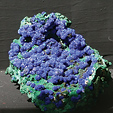 While both zinc and lead deposits also are enriched by the surface weathering process, in part two we will look at the enrichment process for copper and also gold deposits, and at the interpretation of leached outcrops to figure how rich the concentrated deposits below them may be.
While both zinc and lead deposits also are enriched by the surface weathering process, in part two we will look at the enrichment process for copper and also gold deposits, and at the interpretation of leached outcrops to figure how rich the concentrated deposits below them may be.
Picks & Pans: Gold Recovery in Placer Mining Operations
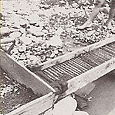 Two of the major factors affecting the profitability of a placer mining enterprise are the relative efficiency of the mining equipment, and the rate and percentage of recovery obtained while conducting mining operations.
Two of the major factors affecting the profitability of a placer mining enterprise are the relative efficiency of the mining equipment, and the rate and percentage of recovery obtained while conducting mining operations.
Gold Deposits of Montana
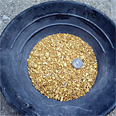 Historically, Montana has been an important gold producer, in terms of both lodes and placers, and it still produces gold for the prospector today.
Historically, Montana has been an important gold producer, in terms of both lodes and placers, and it still produces gold for the prospector today.
Calcite and Limestone
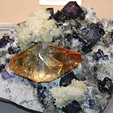 The other distinguishing feature of calcite has to do with its chemistry. Geologists sometimes take a small bottle of dilute hydrochloric acid out into the field with them because calcite reacts with acids to make a bubbly foam.
The other distinguishing feature of calcite has to do with its chemistry. Geologists sometimes take a small bottle of dilute hydrochloric acid out into the field with them because calcite reacts with acids to make a bubbly foam.
Alaska Gold: Lisianski Inlet's First Bonanza
 In 1967, a local resident showed me a pouch of small gold nuggets and flakes. Several years later I asked the same person where that gold was found. He responded, “From the streambed below the old stamp mill at Apex.”
In 1967, a local resident showed me a pouch of small gold nuggets and flakes. Several years later I asked the same person where that gold was found. He responded, “From the streambed below the old stamp mill at Apex.”
Rock and Formations of the Mother Lode Gold Belt
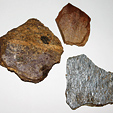 The faulting, folding and shearing that occurred in the Mother Lode belt has created zones of structurally weak rocks or contacts between different types of rock, which has been favorable for the deposition of gold bearing ores.
The faulting, folding and shearing that occurred in the Mother Lode belt has created zones of structurally weak rocks or contacts between different types of rock, which has been favorable for the deposition of gold bearing ores.
All About Quartz—Part I
One of the first minerals most prospectors learn to recognize is quartz, because, in the right circumstances, it can be an excellent indicator mineral for prospectors. Quartz is common, easy to identify, and is often associated with gold and other valuable metal deposits.
Subscription Required:
The Bawl Mill
• Ask The Experts - Do you have more info on Silver Peak?
• Ask The Experts - Forest Service blocking claim access
• Green Valley's Fine Gold Patch
• Gold Prospecting for Better or Worse: Powerless
• Revisiting Old Haunts
• How to Refine Silver—Pt II
• Where to Start: Advice for the Beginning Detectorist
• Melman on Gold & Silver
• Mining Stock Quotes and Mineral & Metal Prices
Free:
Legislative and Regulatory Update
• PLP Update
• MSHA Moves Ahead on Silica RFI But Leaves All Options Open
• Traders At JPMorgan Chase Indicted For Rigging Metal Prices







